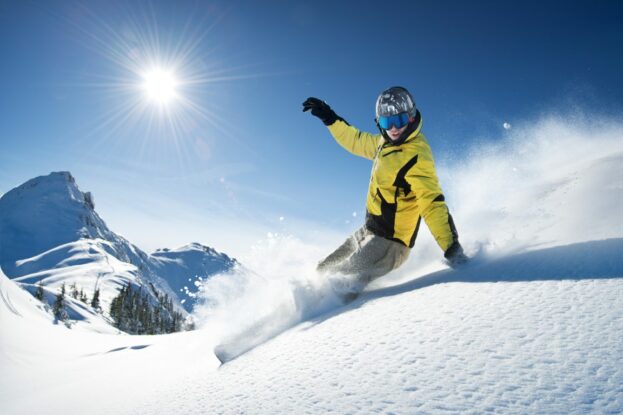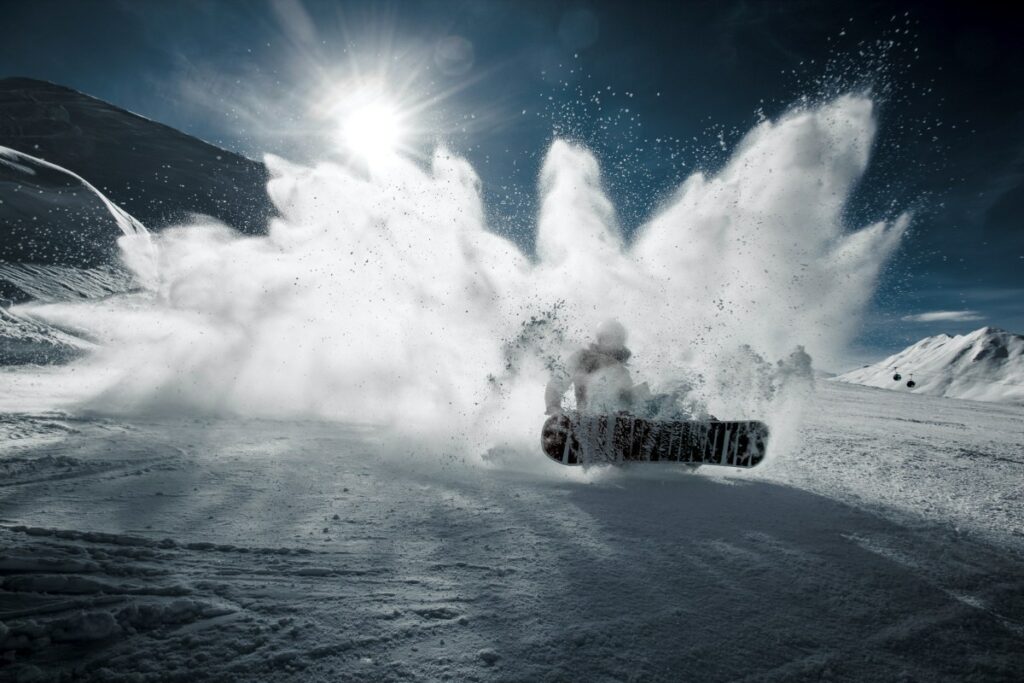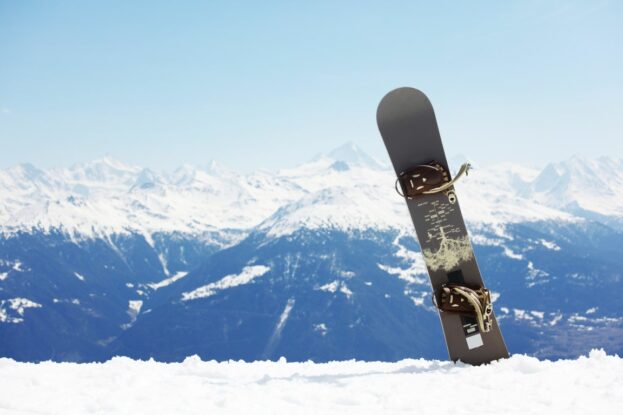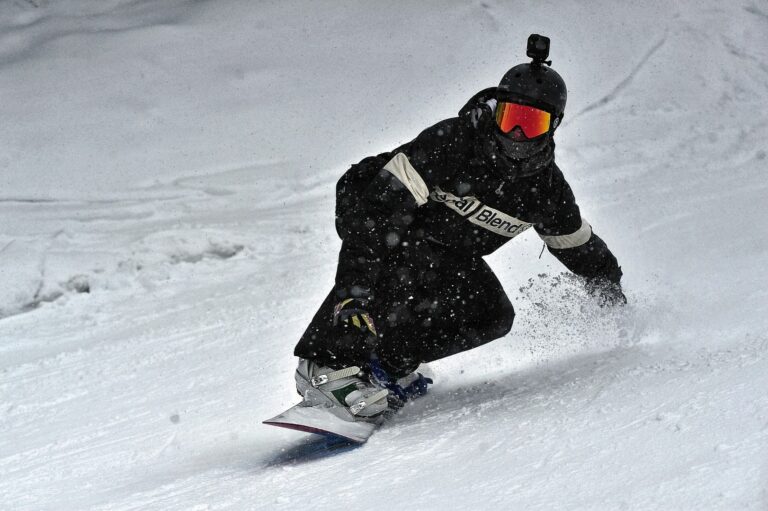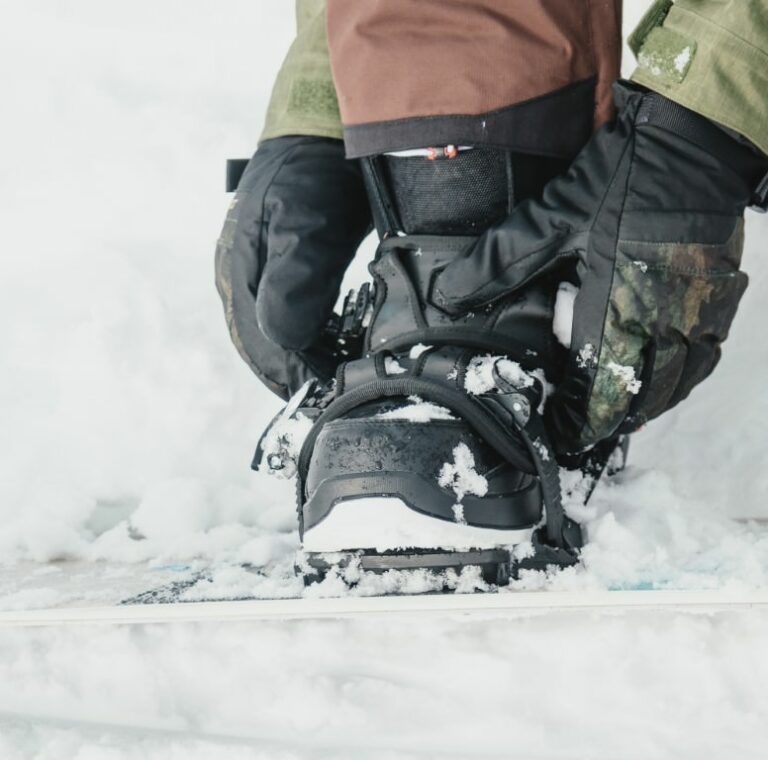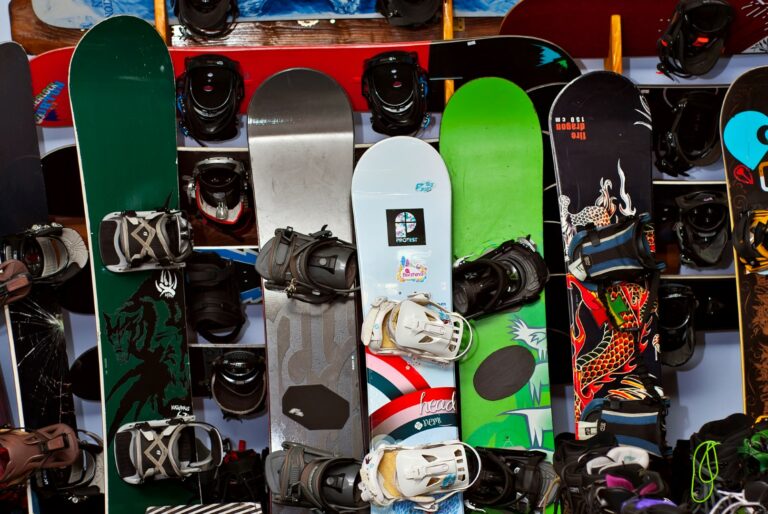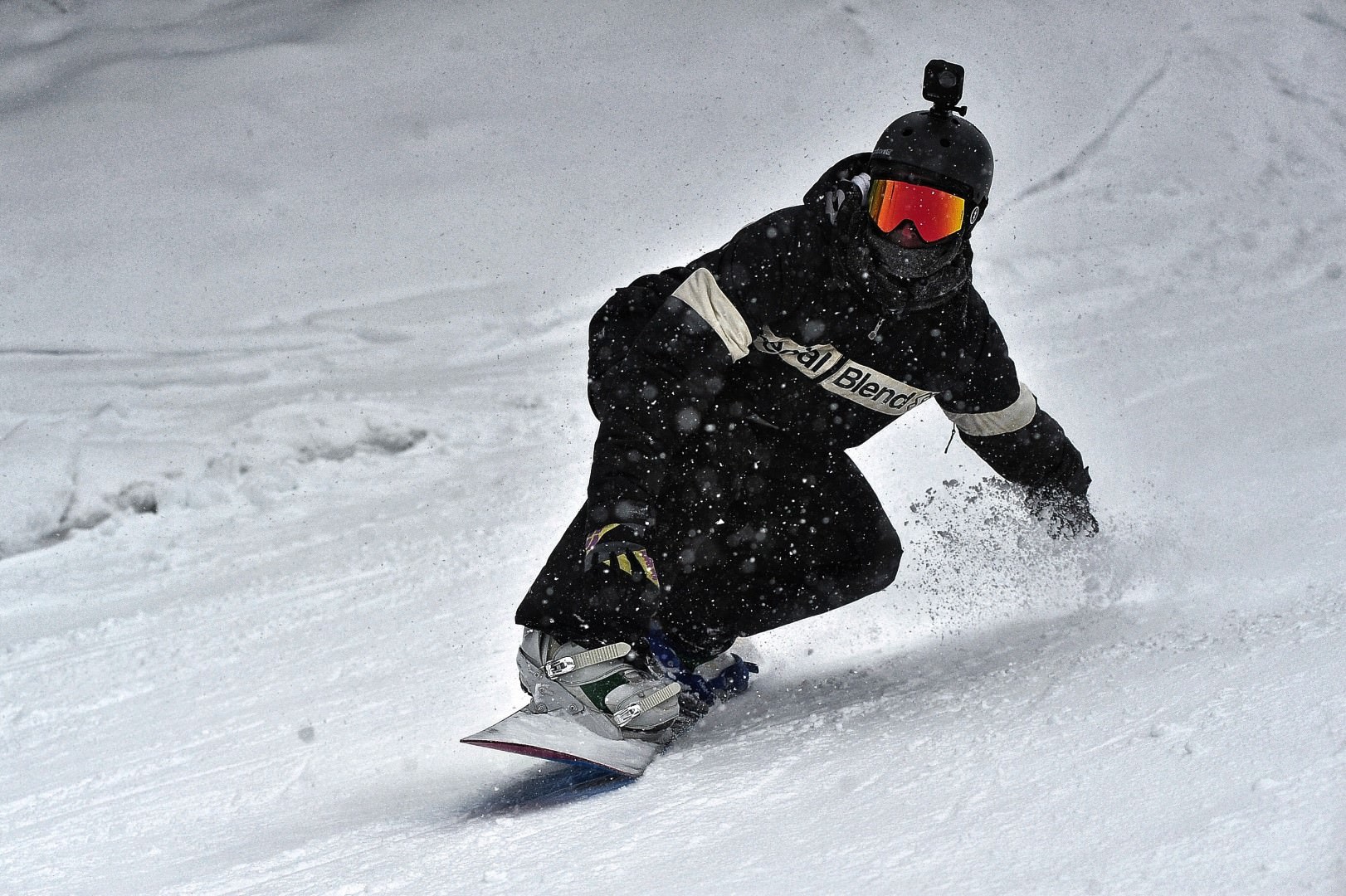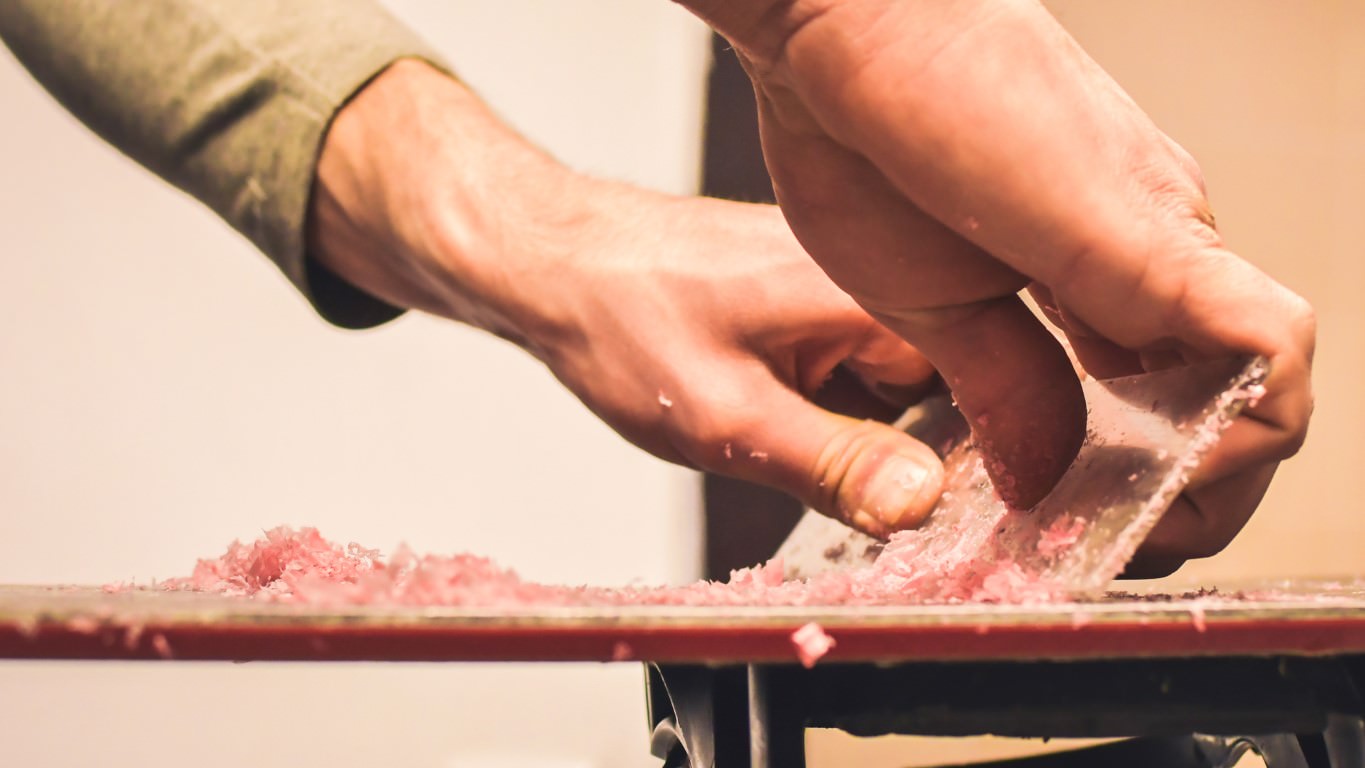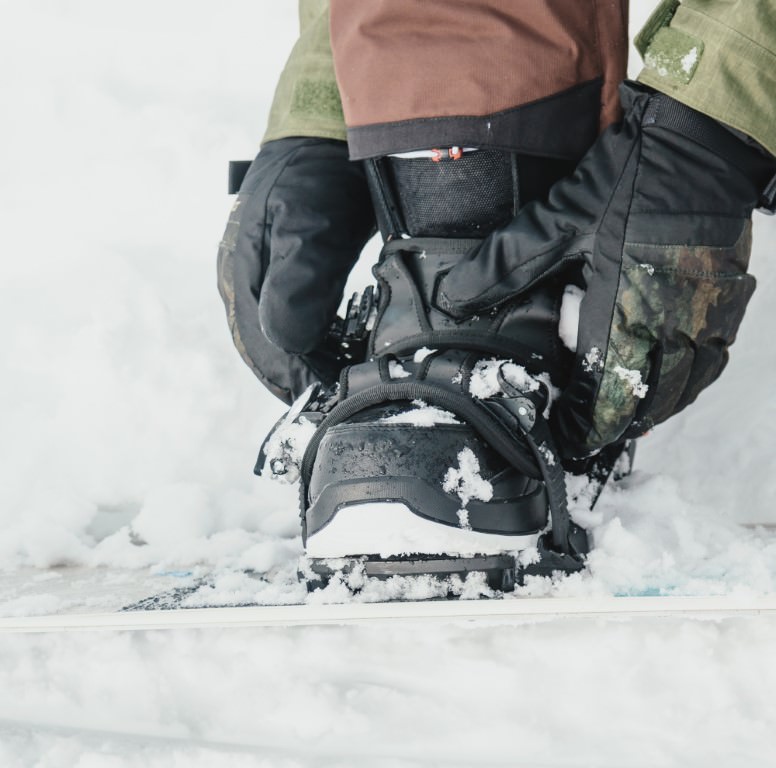Unlike skiing, snowboarding was not invented as a form of travel, as a convenience to get around snowy landscapes. Snowboarding grew from a desire to use the mountains as a playground, to treat the snow as a blank canvas on which to paint your own picture. This non-conformity to the rules and the traditional way of using the mountains is what became freestyle snowboarding.
In this comprehensive guide, we will explore the ins and outs of freestyle snowboarding. We talk about everything from essential gear to mastering tricks. Towards the end, we’ll answer some frequently asked questions about this subgenre of snowboarding.
What is Freestyle Snowboarding?
You may have seen Olympic snowboard athletes defying gravity to push the boundaries of creativity and athleticism. The Olympics, X-Games, Dew Tour and World Cup circuit are the peak of freestyle snowboarding, where the pros showcase their skills and style.
Competitive freestyle emphasizes creativity, personal expression, technical prowess and bravery. But most snowboarders never go anywhere near as big as the professionals. However, every freestyler still pushes their own skills, expresses themselves and risks getting hurt all in the name of snowboarding.
At its simplest definition, freestyle snowboarding is performing tricks on a snowboard. You are free to do whatever tricks you like, but the goal is to do them with style. There is no right or wrong way to freestyle, it is about expressing yourself and having fun. The majority of the time no-one else even witnesses your tricks, but you are still stoked to land them.
At the Olympics you’ll see snowboarders hitting features such as jumps, rails, and halfpipes. But this is only part of the story. Freestyle happens every time you butter on the flats or get a tiny bit of air. It is what turns snowboarding from a practical way to slide down a slope into a fun and creative form of art. Essentially freestyle snowboarding turns the slopes into a blank canvas on which you can express yourself.
Tricks and Techniques: The Building Blocks of Freestyle Snowboarding
Freestyle snowboarding encompasses a huge range of tricks and techniques. At the basic level you can break it down into five categories:
- Carving: Many probably wouldn’t consider carving to be a form of freestyle snowboarding. But as soon as you mix carving with style, add a revert or pop some air you have basic freestyle going on.
- Jumps: Hit a kicker, lip, mogul or just hop an ollie and you are in the air freestyling. To ramp up the style, snowboarders add spins, flips, and grabs while in mid-air.
- Boxes and Rails: Snowboarders balance while sliding along rails, boxes, tree trunks, stair rails and other features, executing presses, jibs and other tricks.
- Jibbing: Lift one foot off the ground and you are doing a press, add a flatland spin and it is a butter. Combine this with jumps and carving and even the most boring flat slope is a playground without limits. Add the jibbing to rails and other natural or man-made obstacles and you’ve got the most expressive form of freestyle.
- Halfpipe: A discipline all of its own with origins in skateboarding. You ride up and down the walls of a U-shaped ramp, performing aerial tricks and spins as you progress down the slope.
Essential Gear for Freestyle Snowboarding Success
You can freestyle in any snowboarding gear – even skiers freestyle these days! But if you really want to get into freestyle there is plenty of specialist gear you can invest in:
- Freestyle Snowboard: A shorter, more flexible board designed for maneuverability and ease of performing tricks. Often they have a rocker or hybrid profile to make them more forgiving and easier to press, butter and jib.
- Snowboard Boots: Typically freestyle snowboard boots have a little more give to match the softer boards. But to be honest, fit and comfort should always be your first priority in boots and most people only own one pair.
- Freestyle Bindings: Like boots and board specific freestyle bindings tend to be a little softer. Often the highbacks are more shaped around the boot back to help you perform tricks. Many bindings also have cushioned areas to reduce the impact from big landings.
- Protective Gear: I am of the school of thought that you should always wear a helmet snowboarding and this is even more important when riding freestyle, as icy snow and rails can do a lot of damage. Despite snowboarding for more than two decades I also still wear wrist guards. Mainly because if you get a trick wrong you can land heavily on a wrist so why ruin your season? Impact shorts, knee pads and a back protector are also useful for freestyle snowboarders.
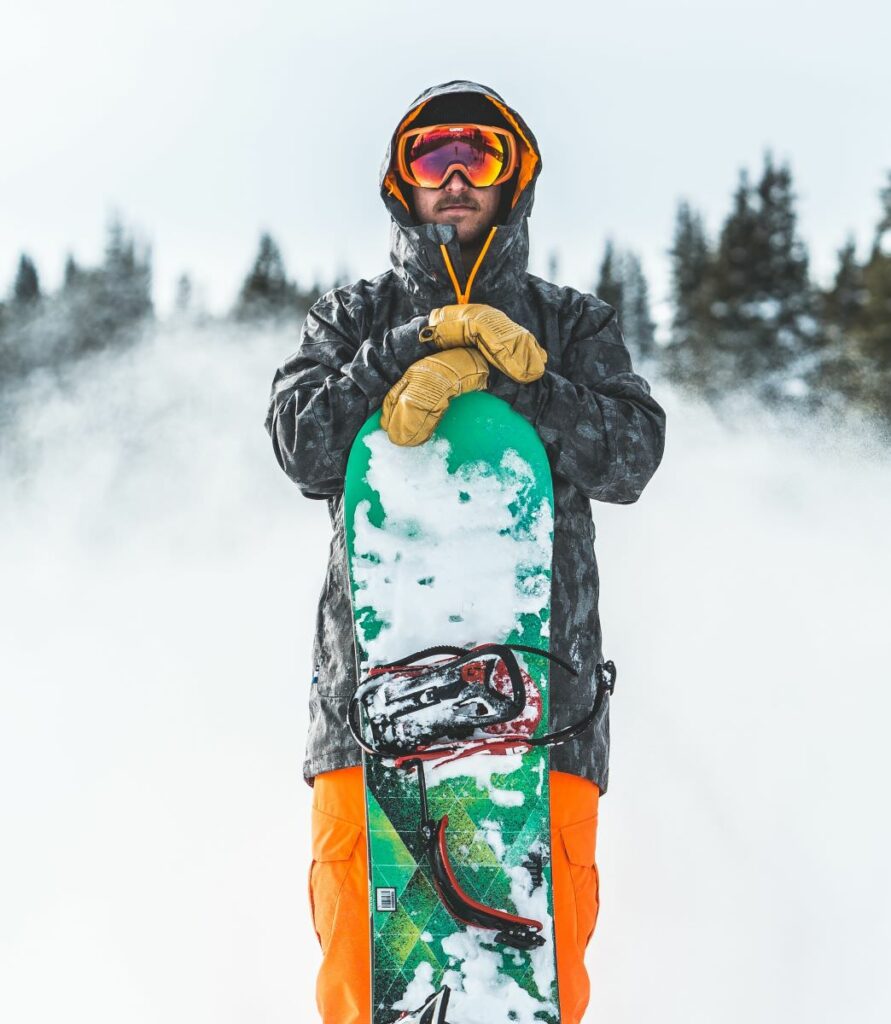
Terrain Parks: The Playground for Freestyle Snowboarders
Terrain parks, also known as snow parks, are specially designed freestyle areas within ski resorts, featuring jumps (also known as kickers), rails, boxes, quarterpipes, halfpipes and other features.
They usually cater to a range of skill levels that correspond to the normal ski classifications of green, blue, red (not in North America) and black difficulty. Terrain parks provide a controlled environment to practice freestyle snowboarding, often with dedicated lifts, a cool atmosphere with music playing and are regularly maintained to make it as safe as possible.
It is worth noting that a beginner freestyle feature is not suitable for a beginner snowboarder – you need to be able to ride safely first. Furthermore, even an advanced snowboarder should start on the beginner features the first time in a terrain park.
How to Progress and Develop Your Freestyle Skills
Send it! Is what I want to say… In many ways that is the answer, as the only way you get good at freestyle is by doing things you have never done before. This means you will have to ‘send it’ and you will fall.
However, that’s not to say you shouldn’t send it in a controlled way; snowboarding can be dangerous when control is lost. So obviously don’t try to do a triple cork off your first jump. Progressing in freestyle snowboarding takes time, practice, and dedication. Follow these tips for gradual improvement:
- Master the Fundamentals: You’ll never be a good freestyler if you haven’t got a strong foundation of basic snowboarding skills. Before attempting any tricks you should be riding to an intermediate level.
- Learn the Freestyle Basics: Learn how to do a press on the flat, and to spring off the nose and tail of your board. Without moving practice ollies and learn to stick the landing. Next jump a 180 on the flat. You can do all of this at home on a mat or some old carpet.
- Learn Switch: For many freestyle tricks you need to ride into, or away from, a switch, if you can’t do this you are going to struggle with freestyle. You’ll feel like a beginner again, but spend a day only riding switch on everything until you get it. Once it clicks it becomes as instinctive as regular riding.
- Take Lessons: Work with a qualified freestyle instructor or coach to learn proper technique. They can teach you specific tricks and will give personalized feedback.
- Set Goals: Identify specific tricks or skills you want to master, and create a plan to achieve them.
- Practice Consistently: Regular practice is key to developing muscle memory and refining your skills. And once you can do a trick? Use it or lose it!
- Trampoline: Get a tramp board to practice snowboarding tricks on a trampoline. This is great for learning how spins feel and how to get the rotation right. It is also awesome for muscle memory, particularly for grabs and specific body positions.
The Role of Creativity in Freestyle Snowboarding
Creativity is the essence of freestyle. You are an artist, the slopes are your canvas, your snowboard is your paintbrush and the tricks are your brush strokes. The results are an expression of your individuality as you apply your style through unique combinations of tricks with your own flare.
Experimenting with different techniques, features, and approaches will help you develop your own distinctive style. Not only does freestyle push the boundaries of what you can do but this creative attitude is constantly evolving what’s possible on a snowboard.
Tips for Safe and Enjoyable Freestyle Snowboarding
Finding the balance between safety, enjoyment and pushing yourself is a very personal thing. If you are injured you can’t snowboard, but if you are not falling you are not trying hard enough. But don’t let this contradiction hold you back!
Keep the following safety tips in mind to help maintain the right balance:
- Warm Up: Stretch and warm up your muscles before each session to reduce the risk of injury. Pro snowboarders such as Travice Rice use yoga as a way of keeping themselves flexible and ready to snowboard.
- Know Your Limits: Start with beginner-level tricks and progress at your own pace to avoid injuries. Know your limits and listen to your body so you know when to stop.
- Start Small: Every day you need to build back up to your biggest tricks and progress from there. Conditions change, as does your body, so take a few runs doing little tricks before you bust out your big ones.
- Follow Park Etiquette: Respect other riders, wait your turn, and be aware of your surroundings.
- Wear Appropriate Protective Gear: A helmet is a must. Wrist guards, impact shorts, knee pads and a back protector will also minimize the risk of injury.
- Learn to Fall: Knowing how to fall safely can reduce the severity of injuries when a trick doesn’t go as planned. For example, if you clench your fists it reduces the chance of wrist or finger injuries.
- Stay Hydrated and Well-Rested: Proper hydration and rest are essential for maintaining focus and peak performance.
- Don’t Drink and Freestyle: An alcoholic beverage or two, and in some parts of the world a doobie, can be a lot of fun. But don’t then hit the snowpark as your impaired judgment is more likely to lead to accidents.
Freestyle Snowboarding FAQs
What should I look for in a freestyle snowboard compared to a regular snowboard?
Freestyle snowboards are typically shorter, softer and more flexible than regular snowboards, with a true twin shape for easier switch riding. They tend to have a centered stance and a rocker, or hybrid camber, profile for enhanced maneuverability and catch-free riding.
What is the best way to start learning freestyle snowboarding?
Begin by mastering basic snowboarding skills and building a solid foundation. Once comfortable on a snowboard, start practicing beginner-level tricks and consider taking lessons from a qualified instructor or coach to learn proper techniques.
For example, I always struggled doing 180s off kickers in the park. I was fine doing 180s and 360s off side-hits. So I booked half a day with an instructor. He quickly got me doing front and backside 180s and cab 180s. By the end of half a day’s tuition I was alternating front and backside threes off four consecutive kickers.
How long does it typically take to master basic freestyle tricks?
This is impossible to answer without knowing you as a rider, what the conditions are like and where you fall in the safety vs send it scale. Just like learning to snowboard, picking up freestyle varies depending on prior experience, athleticism and dedication to practice.
If you focus on one skill, most beginner freestylers will pick up basic freestyle tricks like small straight airs, presses and simple buttering within a few hours. If you have no experience and want to start landing bigger tricks like a 360, then it is going to take longer learning in small progressive steps.
What are the differences between freestyle and other snowboarding styles?
Most snowboarders don’t ride just one style as the different types of snowboarding all complement each other anyway. But while freestyle snowboarding focuses on performing tricks, freeride focusses on being off piste and carving focuses on railing hard on your edges.
However, the typical snowboarder will flit between the styles depending on the conditions. Personally, I love to carve and pop out of it into a 180, or to do a nice shiftie with indie grab while dropping small cliffs off-piste. So as you can I am combining freestyle with the other styles, you could call it all-mountain, but that is a kind of do-it-all snowboard rather than a style of snowboarding.
Are there any specific physical fitness requirements for freestyle snowboarding?
While freestyle snowboarding does not have strict physical requirements, a baseline level of strength, flexibility, and cardiovascular fitness will enhance performance and reduce the risk of injury.
Exercises focusing on balance and core strength such as yoga and pilates are great. And don’t skip the leg day down the gym. Personally, I keep my fitness up with running and mountain biking, then as the season approaches I do lots of squats and weekly trampoline sessions with a tramp board.
How can I find a suitable freestyle snowboarding coach or instructor?
Most ski resorts offer freestyle snowboarding lessons with certified instructors. You can also search for local snowboard schools or ask for recommendations from fellow riders or snowboard shops.
How do I find and choose the right terrain park for my skill level?
Features are categorized by the same color system as ski runs. So beginner-friendly parks will have smaller jumps and features, while bigger features are for more advanced riders. Many snowparks have dedicated websites or social media pages where you can find out about the different features and levels they are suitable for.
As a rule of thumb if a ski area only has one park it will normally have features for all levels. If there are multiple freestyle zones then they might be categorized by level, but this will be made clear on piste maps, online and once at the park.
What are some common mistakes to avoid while learning freestyle snowboarding?
The biggest mistake is not trying tricks as you’ll never learn unless you send it! But attempting advanced tricks before mastering the basics of snowboarding, not wearing appropriate protective gear and ignoring terrain park etiquette are all common errors that can lead to injury.
Conclusion: Get Freestyling!
Freestyle snowboarding is both thrilling and creative with endless opportunities for self-expression and progression. There is no better feeling than combining back-to-back tricks. You might get the odd cheer from a chair lift or fist bump from a riding buddy, but most of the time only you know how awesome you have just been!
Stay safe, have fun, and let your creativity soar.

